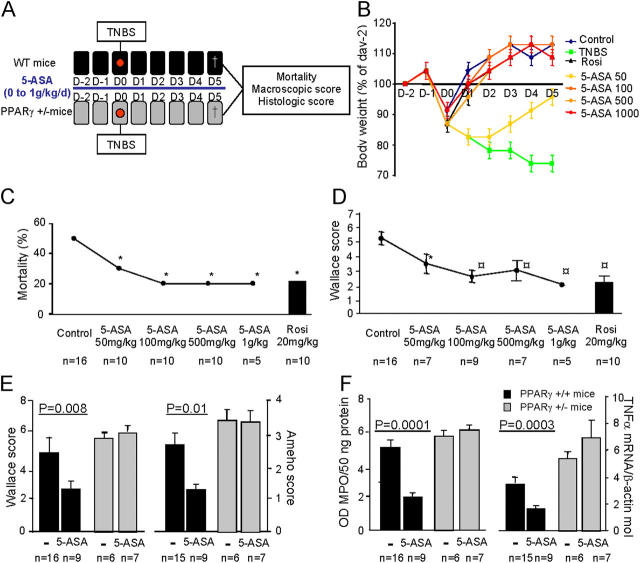Figure 1.
Colon inflammation in PPAR-γ heterozygous mice is refractory to 5-ASA therapy. (A) Colitis was induced by intrarectal administration of TNBS in wild-type mice (black) and PPARγ+/− mice (gray). Animals were killed 5 d later to evaluate the intensity of colitis. (B–D) A detailed dose–response study was performed with oral 5-ASA given daily and compared with untreated animals with colitis (control) or receiving an optimal dosage (20 mg/kg) of rosiglitazone (rosi). 5-ASA effects were analyzed according to the evolution of (B) body weight, (C) mortality, and (D) macroscopic Wallace scores. (E and F) To evaluate whether the antiinflammatory role of 5-ASA in the colon was mediated by PPAR-γ, we compared the antiinflammatory effects of the most efficient dosage of 5-ASA in wild-type mice (black) and in PPARγ+/− mice (gray). In contrast with wild-type mice, 5-ASA was ineffective in PPARγ+/− mice and did not modify (E) macroscopic and histologic lesions evaluated by the Wallace and Ameho scores, respectively, or (F) the colonic molecular markers of inflammation such as myeloperoxidase (MPO) and the production of TNF-α. The number of mice and statistical significance are indicated. Results are expressed as the mean ± SEM. *, P < 0.05 compared with untreated mice with colitis; ○, P < 0.01 compared with untreated mice with colitis.

